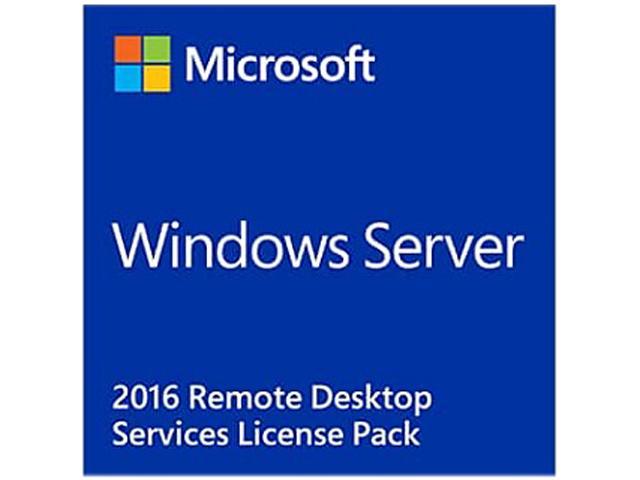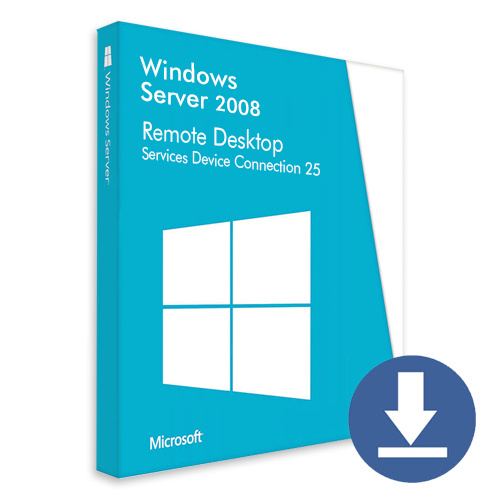

- Windows terminal server cal mac os x#
- Windows terminal server cal install#
- Windows terminal server cal license#
- Windows terminal server cal windows#
an employee who accesses the Server from work and from home), a Device CAL allows access for one computer regardless of the number of users (i.e. A User CAL allows access for one user regardless of device used (i.e. This CAL is for licensing per Device, User CALs are a separate item.
Windows terminal server cal windows#
With Windows 2003, Terminal Services is licensed on a per-device or per-user basis (it is not available on a per-server/concurrent basis).
Windows terminal server cal license#
This is in addition to the Windows 2003 Server Client Access License that is required for each device accessing the Windows Server. This technology is included in Windows 2003 Server, but a Windows Terminal Services Client Access License is required for each device accessing Windows 2003 Terminal Services. Important: Windows Server Standard or Windows Server Enterprise are also required for this product, along with Windows Server User CALs or Device CALs. They will be able to run applications on the Windows 2003 Server in a window on the terminal.
Windows terminal server cal mac os x#
Clients are available for a wide variety of operating systems - including older versions of Windows and Mac OS X - and can be downloaded from Microsoft's Web site. You are just going to have to work hard to keep track of how those CALs are distributed because you’ll have to justify things to Microsoft if you ever get audited.Windows Terminal Services is a technology that lets you remotely execute applications on a Windows 2003-based server from a wide range of devices over virtually any type of network connection. So if you have one group of employees who each use multiple devices and you have another group of employees who share a limited number of devices, you can buy User CALs for some of your employees and Device CALs for the others. It’s not recommended because it’s hard to keep track of who is using a User CAL and who is using a Device CAL, but it is permitted. What if you can’t tell which option would be better? If you’re sitting on the fence and you have about the same number of users and devices, my recommendation would be to go with User CALs since that’s the direction the world is moving.Īlternatively, you can mix User CALs and Devices CALs in the same environment. Some examples of this would be a kiosk in the mall with part-time employees coming and going all week, a maintenance crew who uses a community computer to clock in and out, or a company that operates 24/7 with a day crew and night crew using the same PCs.

The only time the Device CAL model makes sense is when you have a large number of employees using a limited number of computers. Even though User CALs are more expensive, buying one CAL will be much cheaper than buying four. Think of an employee who, in the course of a typical week, accesses their email on their desktop, their laptop, their tablet, and their smartphone. You either need to buy four Device CALs to cover those four devices or you need to buy a single User CAL to cover that user. If you have less devices than users, go with Device CALs.įor most businesses, the User CAL option is the cheaper way to go since typically they have employees who are accessing the servers over numerous devices. If you have less employees than devices, go with User CALs since that will be the cheaper route. So which type should you buy? User or Device? The answer depends on whether you have more employees or more devices. If you are large business, then you pay a much larger price tag since you will need to buy more CALs. If you are a small business, then you pay a relatively small price tag since you only have to buy a few CALs. The Server+CAL model is a way for Microsoft to scale the pricing of its solutions. On their website, Microsoft provides the following images to illustrate the differences between User CALs and Device CALs:

The people using that device do not need a User CAL. Then, anyone using that device would be able to access the server. On the other hand, a “Device CAL” licenses the endpoint device so that the device itself has permission to access the server. They can access it from as many different endpoints as they want since the CAL is tied to the person, not the device. A “User CAL” licenses the person so they have permission to access the server.
Windows terminal server cal install#
They are talking about a “Client Access License.” When one of their server products is licensed using the Server+CAL model, then you have to buy a server license to install the software on the server and you have to buy CALs for the people or machines that will access that server. When Microsoft says “CAL,” they’re not talking about California, calories, or calibers. What exactly do those terms mean and which type should you buy? We often get questions about the differences between User CALs and Device CALs, and which is more appropriate.


 0 kommentar(er)
0 kommentar(er)
